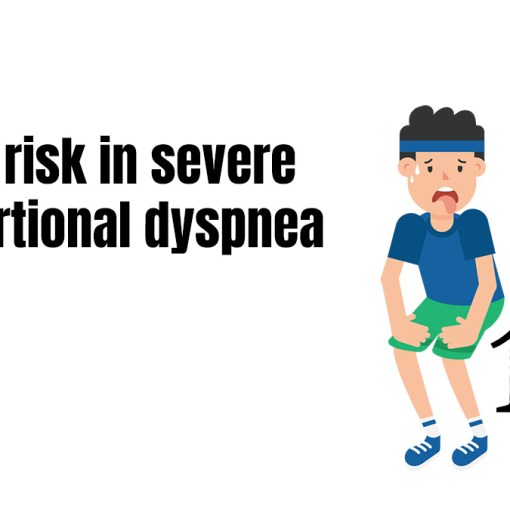Case
A 50 year old man is brought into your emergency department after an unwitnessed cardiac arrest. You follow the simplified approach to PEA, but are unable to identify a reversible cause. Unfortunately, you never regain a pulse and pronounce the patient dead. Your charge nurse tells you, “the family has just arrived – they are waiting for you in the quiet room”. It’s important to have an approach to breaking bad news…
My approach
I will preface my approach by saying I usually don’t feel like an expert when I have to break the news of a loved one’s death. I count on communication as one of my clinical strengths, but in this situation my emotions seem to cloud my mind and I have a very hard time finding the right words.
There are many different approaches to this conversation and none are perfect. I don’t pretend that my approach is the only or the best. In fact, I am sure most readers will have ideas on ways to improve this; phrases they find useful or statements to avoid. We can all learn from each other. If you have any thoughts, whatever your role, whether you have experience giving or receiving this talk, please comment at the end of the post.
So, my approach:
Before entering the room
Get help. It is almost always better to have someone with you for this conversation. If you are lucky, you have a social worker or a chaplain on staff. An experienced nurse can also make a world of difference. Not only are these individuals communication experts, sometimes with a little pre-existing knowledge of the family, they also ensure that someone is available so that you will not be forced to leave the bereaved alone when you are called back to clinical duties.
Make sure you have plenty of time. Give the charge nurse your phone or pager. Specifically set the time aside and make sure you are 100% present.
Check your appearance. Make sure you change any bloody or dirty clothes.
Take a minute to sort your thoughts before you enter the room. Make sure you know the patient’s name! (This seems obvious, but frequently in cardiac arrest situations, I can run an entire code without ever being told the patient’s name. It would be easy to walk out to the family without checking this first.) Spend a minute to review what you need to say.
Choose the right location. Hopefully your department has somewhere appropriate already. Find somewhere private, quiet, comfortable, and preferably non-clinical.
In the room
Sit down.
Introduce yourself and anyone you have with you.
Establish who is in the room.
Foreshadow that you have bad news, “I am afraid I have very bad news”, and then get to the point: “John died”.
Some people ask the family members what they know about the situation before breaking the news. This has never felt natural for me. I believe the family can already sense the news from my body language and making them answer questions just seems to delay the inevitable. I do find that a brief amount of context is reasonable.
John collapsed at home. The paramedics found that his heart was stopped and were doing chest compressions when they brought him here. His heart still wasn’t beating when he got to the emergency room, and in spite of everything we have done, he died.”
Doug was in a car accident and he was very badly injured. Despite everything that the team could do, Doug died.”
I’m sorry, Joan was very sick when she arrived here and despite everything we could do Joan has died”
At this point, you will want to keep talking. Silence in the room will feel awful. Fight yourself with everything you have and just keep your mouth shut. No one will actually hear anything you say anyway. This is the time for good body language, a box of tissues, perhaps a hand on a shoulder, and a quiet “I’m so sorry for your loss”.
It should go without saying, because it is true of all communication with patients and family members, but make sure you are using clear, understandable language and avoiding medical jargon. The classic mistake is to avoid the word “died” and instead say something like “John has moved on”.
Provide information if it is wanted, but make sure you check with the family, either by monitoring non-verbal signals, or by simply asking how much they want to know. Try to provide the information in short segments, allowing time between to process the information. Allow time to reflect.
I tend to finish by asking: “Do you have any questions?” If you did not bring anyone in the room with you (and I don’t suggest it) make sure you know all the practical details about what comes next. The first few times I did this, I was surprised at how many practical questions the family had, and at how unprepared I was to answer their questions.
Leaving the room
Perhaps the least human part of being an emergency physician is that we are forced to deliver this news and then quickly get back to work. Ideally, I would sit quietly until the family had time to process their emotions, but I rarely have enough time. This is one of the key reasons to bring another individual into the room with you. When it is time for me to leave, I tend to say something like:
Finally, I always invite the family to spend some time with their loved one. Remember to prepare them for any visible injuries or medical equipment still in place
Remember to consider the state of the individuals in front of you. Although I cringe to over-medicalize perfectly normal grief reactions, you will be talking to individuals on the worst day of their lives. It may be useful to think of them as your patients. I know some emergency departments actually register all family members as emergency patients.
Notes
There is considerable debate about saying “I’m sorry”. Personally, I think that is mostly silly. If my friend or my neighbor lost a love one, the first words out of my mouth would be “I’m so sorry”. The phrase is a marker of empathy and part of normal human communication. If those are the words that come to your mind, say them. If they make you uncomfortable, don’t.
Like all the topics covered on First10EM, this will benefit from advanced practice. I would pick phrases that sound natural to you and actually speak them out loud until they become second nature, so that you will not be at a loss for words when the time comes.
This process is easier with family preparation. If a patient arrives in critical condition, honesty and early communication with the family are essential. Although still somewhat controversial, inviting family members into the resuscitation room during resuscitation allows them more time to come to terms with death and seems to limit shock.
The question of whether to break the news of death over the phone can be difficult. Obviously, the preferred method is face to face, but you shouldn’t lie to family members, or have them rush in, potentially endangering themselves, because they believe their family member is in critical condition when in fact they are already dead. There is an excellent section on telephone communication in the longer (also good) article “Breaking news of death to relatives” on NursingTimes.net.
Remember to care for your staff members as well as the family.
The more that you talk, the worse it is” – Stuart Swadron on ERCAST
The terrible thing has happened already. You have the potential to make the whole experience slightly less awful but you are not the cause of the grief.” – Mark Putland on EDCentral
The SPIKES model (McEwan 2016)
Setup: Make sure you know the facts; determine who is in the rooom and who needs to be in the room; make sure you have an appropriate room and will not be interupted. Get a translator if needed.
Perception: Determine the participants current perceptions about the situation
Invitation: Determine how much information the participants want to find out
Knowledge: Give a warning shot and deliver the information
Empathize
Summary
Other FOAMed Resources
Communicating terrible news: Can we do it better? Liz Crowe at St. Emlyn’s
EM Minset series: On the bearing of bad news
“I wish things were different” at EPmonthly
I’m Sorry… we did everything we could. Breaking bad news in the ED on the EDCentral Blog
There is a conversation about breaking bad news at the end of the Effective Patient Communication podcast on Emergency Medicine Cases
Breaking Bad News to Relatives on LITFL
Delivering Bad News part 1 and part 2 from the palliative care fast facts at CAPC
Tim Noonan argues strongly for the use of the word “dead” in How to tell a family that their loved one has died on KevinMD
References
VandeKieft GK. Breaking bad news. Am Fam Physician. 2001;64:(12)1975-8. PMID: 11775763
Iverson KV. Notifying survivors about sudden, unexpected deaths. West J Med. 2000;173:261-5. PMID: 11017994
Baile WF, Buckman R, Lenzi R, Glober G, Beale EA, Kudelka AP. SPIKES-A six-step protocol for delivering bad news: application to the patient with cancer. Oncologist. 2000;5:(4)302-11. PMID: 10964998 (free full text here)
Buckman R. How to break bad news: A guide for health care professionals. Baltimore, Johns Hopkins University Press: 1992.
Marrow J. Telling relatives that a family member has died suddenly. Postgrad Med J. 1996;72:(849)413-8. [pubmed] (free full text here)
McEwan A, Silverberg JZ. Palliative Care in the Emergency Department. Emergency medicine clinics of North America. 34(3):667-85. 2016. PMID: 27475020
Morgenstern, J. Breaking Bad News: Notifying family members of a death in the emergency department, First10EM, July 6, 2015. Available at:
https://doi.org/10.51684/FIRS.591






10 thoughts on “Breaking Bad News: Notifying family members of a death in the emergency department”